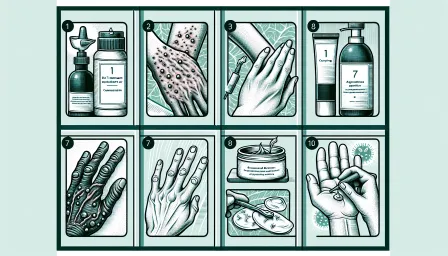5 Steps to Eliminate Dark Spots: Your Ultimate Skincare Routine Guide

Discover the ultimate skincare routine for dark spots with this comprehensive guide. Dive into a 5-step regimen that restores your skin's natural glow.
Dealing with dark spots can be a frustrating skin concern that affects many individuals, regardless of age or skin type. These hyperpigmented patches can detract from your skin's natural beauty and may be challenging to fade. However, with the right skincare routine for dark spots, you can significantly reduce their appearance and achieve a clearer, more radiant complexion. This article delves into a meticulously researched, five-step regimen designed to address and minimize dark spots.
Understanding Dark Spots
Before diving into the skincare routine, it's crucial to understand what causes these dark spots. Hyperpigmentation occurs when excess melanin forms deposits in the skin. This can be triggered by factors such as sun exposure, hormonal changes, acne scars, or aging. Identifying the cause of your dark spots will help tailor the most effective treatment plan.
Step 1: Sun Protection
The Importance of SPF
One of the most critical steps in preventing the formation and darkening of hyperpigmentation is daily sun protection. Applying a broad-spectrum sunscreen with at least SPF 30 protects the skin from harmful UV rays that can exacerbate dark spots. It's essential not only to apply sunscreen in the morning but also to reapply throughout the day, especially after sweating or swimming.
Step 2: Use Targeted Treatments
Choosing the Right Ingredients
After safeguarding your skin with SPF, incorporating targeted treatments specifically formulated to address hyperpigmentation is key. Look for products containing ingredients like hydroquinone, vitamin C, niacinamide, or retinoids. These have been scientifically proven to reduce the appearance of dark spots by inhibiting the production of melanin.
Step 3: Exfoliation
Chemical vs. Physical Exfoliants
Regular exfoliation is necessary to remove dead skin cells that can cause the skin to appear dull and exacerbate the visibility of dark spots. However, it's essential to choose the right type of exfoliant. Chemical exfoliants, such as AHAs and BHAs, penetrate deeply into the skin to unclog pores and rejuvenate the skin's surface. Physical exfoliants, on the other hand, manually remove dead cells through scrubbing. For managing dark spots, chemical exfoliants are generally preferred for their ability to provide even exfoliation without causing micro-tears in the skin.
Step 4: Moisturize
Hydration and Healing
Hydrated skin is crucial for any skincare routine, especially when dealing with dark spots. Moisturizing helps to repair the skin barrier, improve skin texture, and reduce the chances of irritation from active ingredients in your targeted treatments. Look for moisturizers that contain hyaluronic acid, ceramides, or glycerin to help maintain the skin's hydration levels.
Step 5: Be Patient and Consistent
The Role of Consistency
Last but not least, patience and consistency are vital. Treating hyperpigmentation is a gradual process that requires time and regularity. It's important to stick with your skincare routine for dark spots daily, and understand that results may take several weeks to become noticeable. Consistent use of these steps will ensure the best outcomes in fading dark spots and achieving a more even-toned complexion.
Conclusion
Implementing a comprehensive skincare routine for dark spots is essential for anyone looking to diminish hyperpigmentation and achieve a clearer, healthier-looking complexion. By following these five steps—protecting skin from the sun, using targeted treatments, exfoliating regularly, moisturizing, and remaining patient and consistent—you can effectively minimize the appearance of dark spots and restore your skin's natural radiance. Remember, consult with a dermatologist for personalized advice and to address any underlying issues contributing to dark spots.



























